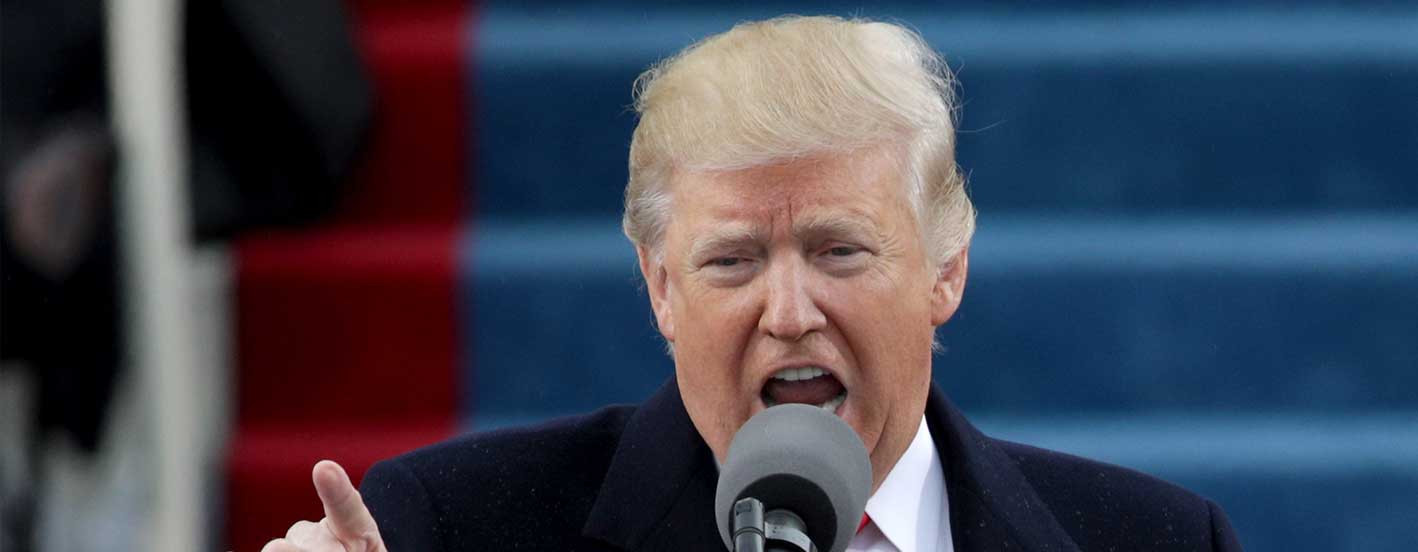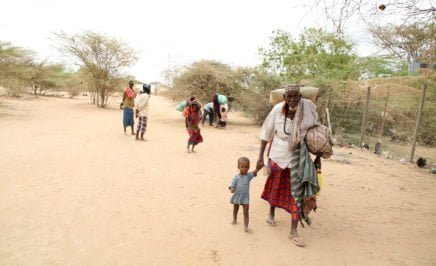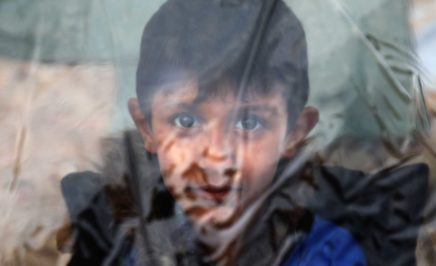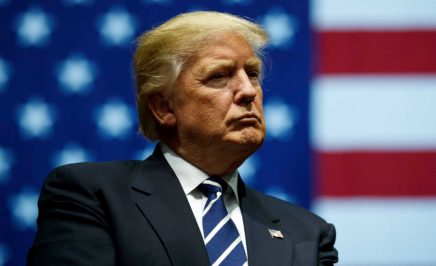For those who watched appalled as Donald Trump won the US presidential election basing his election on a platform of fear, xenophobia and hate, there was always the consolation that his poisonous campaign rhetoric might be a mere vote-winning strategy. Just words.
Yet the new President has swiftly backed up this hateful discourse with a series of repressive executive orders, which will have far-reaching, catastrophic consequences. This is not just a US problem. The policies of Trump’s White House will have a ripple effect in all corners of the globe, with the most vulnerable hit the hardest.
On Monday, following weeks of suspense, the White House issued a revised executive order – a Muslim ban by any other name. With the stroke of a pen, the President again shut the door to anyone from Syria, Iran, Libya, Somalia, Sudan and Yemen. Not only are these all predominantly Muslim countries; they are places where most people seeking asylum are fleeing conflict and human rights violations. Make no mistake: people will lose their lives because of it.
“With the stroke of a pen, the President again shut the door to anyone from Syria, Iran, Libya, Somalia, Sudan and Yemen”
By slightly narrowing the scope of the new executive order, the Trump administration may have remedied some of its predecessor’s constitutional flaws, but it remains blatantly discriminatory and reinstates many of the repellent elements of the original.
Trump claims to be blocking the entry of “terrorists” who would harm the USA. But in reality, there is no data to support the view that refugees – Muslim or otherwise – pose more risk of committing acts of terrorism than citizens. Trump also imposed an annual refugee cap of 50,000. With Barack Obama’s administration having already pledged to admit 110,000 refugees in the current fiscal year, this order will affect 60,000 vulnerable people in 2017 alone.
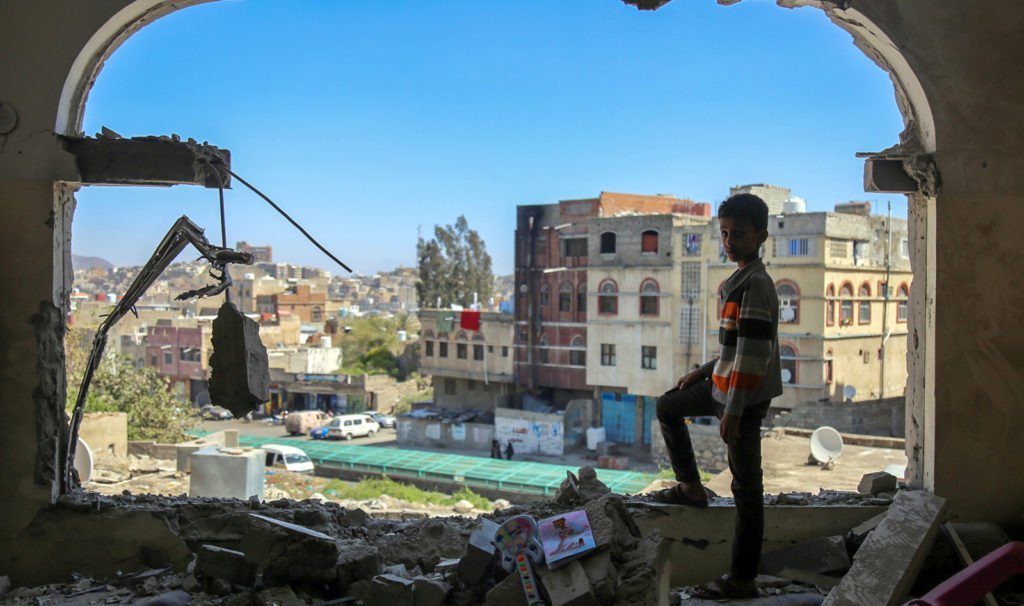
Callous and cruel
The fact that this comes amid a global emergency in which 65 million people are displaced due to war and persecution underlines its callousness. But in the era of “fake news” and trumped-up “alternative facts”, the truth is clearly of no interest to the President.
For the refugees and migrants facing real life-and-death decisions, pretense and fakery are not luxuries they can indulge in. Since the travel ban first took effect, Amnesty International and others have encountered tales of terrible suffering in its wake in various countries around the world. Families rent asunder, lives put on hold, hopes of new beginnings crushed overnight.
“We’re calling on the Australian Government to step up, show global leadership and condemn President Trump’s hateful actions”
Like the man who went to Iran for his father’s funeral and was suddenly faced with the prospect of not being allowed to return home to the US. Or the Yemeni family in New York whose one-year-old baby is now stuck thousands of miles away in Malaysia because the travel ban forced them to leave her behind. Or the persecuted Sudanese journalist living underground in Egypt, fearing for his life, who is now questioning how safe Trump’s USA would be to seek asylum in.
When President Trump issued this Executive Order the first time, Prime Minister Turnbull stayed silent. We’re calling on the Australian Government to step up, show global leadership and condemn President Trump’s hateful actions and call them for what they are: cruel and deeply misguided. Australia should help the people who President Trump has rejected by increasing Australia’s annual humanitarian intake to at least 30,000 people
In the six weeks since taking office, Donald Trump has waged all-out war on human rights. Responding with outrage is not enough. It is the time, and the responsibility of all who hold those rights dear, to fight back.
How does the new Executive Order differ from the last one?
The present Executive Order differs from the 27 January Executive Order in several ways:
- There are six (rather than seven) “designated countries” whose nationals are banned from the US for 90 days: Iran, Libya, Somalia, Sudan, Syria and Yemen.
- The Executive Order provides a written justification for each of the six designated countries. These justifications are based on links to or presence of terrorist organizations in the countries.
- Iraq is removed from the original list of seven countries (though Iraqi nationals are identified as being “subjected to thorough review”).
- The ban on entry to the US does not cover lawful permanent residents (colloquially known as “green-card holders”). The ambiguity about whether lawful permanent residents and others holding valid visas were affected was one of the central constitutional problems with the previous Executive Order.
- The ban on entry to the US does not cover people with valid visas.
- The Executive Order does not apply to dual nationals from one of the six designated countries when they are travelling on a passport issued by a non-designated country
- Holders of some other types of visas (such as diplomatic visas) are exempt.
- The Executive Order does not impose an indefinite ban on Syrian refugees.
- The Executive Order does not establish a preference in future refugee resettlement processing for members of religious minorities facing religious persecution.
- While the 120-day suspension of the US Refugee Admissions (i.e. Resettlement) Program and the halving of the USA’s resettlement commitments are the same as in its predecessor, this Executive Order exempts “refugee applicants who, before the effective date of this order, have been formally scheduled for transit by the Department of State.”
